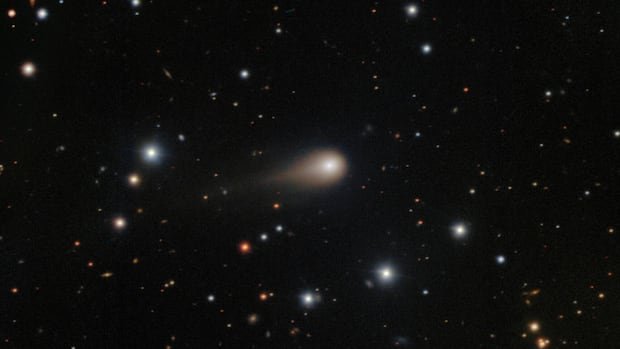On July 1, the Asteroid Terrestrial-impact Last Alert System (ATLAS) made an initial detection of an object thought to be an asteroid. Further analysis revealed that it originated from outside our solar system, marking the third interstellar object ever identified.
Astronomers have been diligently collecting data on the latest interstellar visitor named 3I/ATLAS, despite challenges posed by its dusty gas cloud, known as a coma, obscuring its nucleus. Despite this obstacle, they have managed to uncover some intriguing information.
Initially thought to be an asteroid, 3I/ATLAS was confirmed to be a comet – a frozen gas, rock, and dust body that forms a coma and tail when closer to the sun, as seen in images. Speculations of it being alien technology were dismissed, as it exhibited typical comet behavior.
One notable feature of 3I/ATLAS is its unique polarization, indicating differences in light scattering compared to known comets. Analysis by the James Webb Space Telescope and SphereX revealed an unusual abundance of carbon dioxide among other components in this interstellar visitor.
Although initially estimated to be tens of kilometers wide, further observations suggest 3I/ATLAS has a nucleus diameter of approximately 2.8 kilometers. Its shape remains a mystery due to the obscuring coma, hindering detailed analysis.
The discovery of 3I/ATLAS follows previous interstellar visitors, namely 1I/Oumuamua in 2017 and Comet 2I/Borisov in 2019. Projections suggest a considerable number of such visitors passing through our solar system, with the potential for thousands to be observed annually.
The Vera C. Rubin telescope in Chile offers hope for enhanced detection and study of future interstellar objects, aiding in early identification and prolonged observation. While 3I/ATLAS will soon disappear from sight due to its solar orbit, astronomers anticipate further insights as it reemerges in December.
As 3I/ATLAS ventures closer to Mars than Earth, upcoming observations from the Mars Reconnaissance Orbiter are poised to provide unprecedented resolution, surpassing the capabilities of the Hubble Space Telescope. This upcoming close encounter presents a unique opportunity for enhanced scientific scrutiny.


